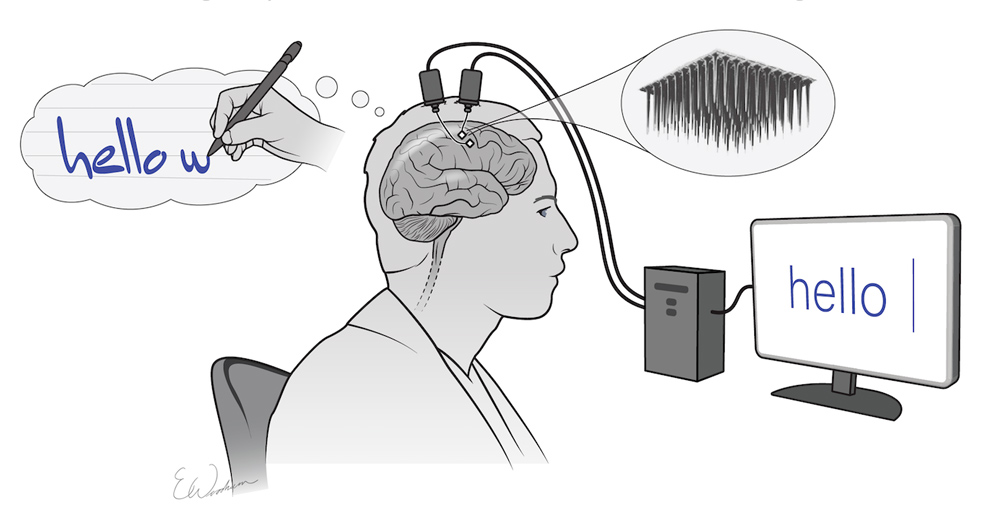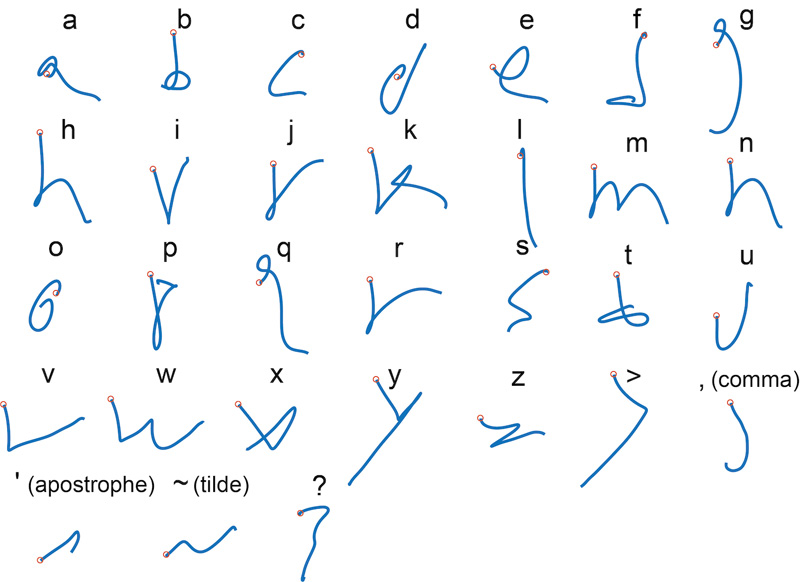
17th May 2021 BCI decodes neural signals for handwriting Researchers at Howard Hughes Medical Institute have, for the first time, decoded neural signals associated with writing letters, then displayed typed versions of these letters in real time. They hope their invention could one day help people with paralysis communicate.
Scientists are exploring a number of ways for people with disabilities to communicate with their thoughts. The newest and fastest turns back to a vintage means for expressing oneself: handwriting. For the first time, researchers have deciphered the brain activity associated with trying to write letters by hand. Working with a paralysed volunteer who had sensors implanted in his brain, the team used an algorithm to identify letters as he attempted to write them. The system displayed the resulting text on a screen – in real time. The innovation could, with further development, let people with paralysis type rapidly without using their hands. In this study, the participant managed to type at 90 characters per minute – more than double the previous record (40) for a brain-computer interface (BCI). A paper is published in Nature.
When an injury or disease robs a person of their ability to move, the brain's neural activity for walking, grabbing a cup of coffee, or speaking a sentence remain. Researchers can tap into this activity to help people with paralysis or amputations regain lost abilities. In this case, a team at Howard Hughes Medical Institute in Maryland, USA, worked with a 65-year-old patient who had a spinal cord injury that left him paralysed from the neck down. Two tiny arrays of implanted electrodes relayed information from the brain area responsible for controlling hands and arms to an algorithm, which translated it into letters on a screen. As the participant imagined writing a letter or symbol, the algorithm traced a path of his imaginary pen. This system enabled him to copy sentences and answer questions at a rate similar to that of someone his age typing on a smartphone. This so-called "brain-to-text" BCI is so fast because each letter elicits a highly distinctive neural activity pattern, making it relatively easy for the algorithm to distinguish one from another, the study authors explain. The team envisions using attempted handwriting for text entry as part of a more comprehensive system that also includes point-and-click navigation, much like that used on current smartphones, and even attempted speech decoding. Next, they intend to work with a participant who cannot speak – such as someone with amyotrophic lateral sclerosis, a degenerative neurological disorder that results in the loss of movement and speech. The new system could potentially help those suffering from paralysis caused by a number of other conditions, including brain stem stroke.
Comments »
If you enjoyed this article, please consider sharing it:
|








